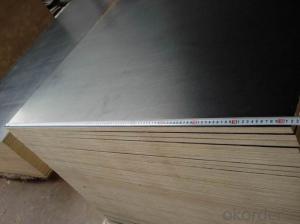Plywood, that versatile and reliable material, has been a staple in construction, furniture making, and countless DIY projects for decades. But with so many sizes, types, and grades available, how do you choose the perfect plywood sheet size for your specific needs? Let’s dive into the art of selecting the right plywood for your project, with a touch of personality and a sprinkle of passion.
The Beauty of Plywood: A Brief Overview
Plywood is a type of engineered wood that consists of thin layers of wood veneer, or plies, glued together under heat and pressure. Each layer is rotated 90 degrees relative to the adjacent layer, which gives plywood its exceptional strength and dimensional stability. It’s this unique construction that makes plywood a favorite among woodworkers, builders, and DIY enthusiasts.
Why Size Matters
Size is not just a number when it comes to plywood. It’s a crucial factor that can affect the feasibility, cost, and outcome of your project. A larger sheet may seem like the obvious choice, but it can be more challenging to handle and transport. On the other hand, smaller sheets might require more seams, which could compromise the aesthetics and structural integrity of your finished piece.
Factors to Consider Before You Pick
Before you head to the lumber yard or scroll through online listings, consider these factors to help you pick the perfect plywood sheet size:
1. Project Requirements: What are you building? The size and scope of your project will guide your plywood size decision.
2. Space Constraints: Do you have the space to work with larger sheets, or will a smaller size be more manageable?
3. Transportation: Can you easily transport larger sheets, or will you need to make multiple trips for smaller ones?
4. Cost: Bigger sheets usually cost more, but they can also save you money by reducing the need for additional pieces.
5. Aesthetic Preferences: Some projects may require a consistent grain pattern or color, which can be easier to achieve with larger sheets.
6. Availability: Not all sizes are created equal when it comes to plywood. Some sizes may be harder to find than others.
Common Plywood Sheet Sizes
Plywood comes in a variety of standard sizes, but the most common are 4X8 feet, 4X10 feet, and 5X5 feet. These sizes are designed to meet the needs of most projects, but there are also custom sizes available for those with specific requirements.
The 4X8 Standard
The 4X8 sheet is the go-to choice for many woodworkers. It’s a versatile size that can be cut down to fit a wide range of projects. Whether you’re building a set of shelves, a piece of furniture, or a large-scale structure, a 4X8 sheet has got you covered.
The 4X10 Option
For those projects that require a bit more length, the 4X10 sheet is a great alternative. It’s perfect for cabinetry, room dividers, or any project that needs an extra foot of length without the extra width.
The 5X5 Square
If you’re working on a project that benefits from a square layout, the 5X5 sheet is an excellent choice. It’s ideal for table tops, large boxes, or any project where equal dimensions are a priority.
Custom Sizes: When the Standard Just Won’t Do
Sometimes, the standard sizes just don’t cut it. In these cases, custom sizes can be a lifesaver. Whether you need a specific width for a built-in bookcase or a particular length for a unique piece of furniture, custom plywood can be ordered to fit your exact specifications.
Plywood Grades and Quality
When choosing the right plywood, don’t forget to consider the grade and quality. Plywood is graded based on the quality of the wood veneer and the absence of defects. Higher grades, such as A or B, will have fewer knots and a smoother surface, while lower grades, like C or D, may have more visible imperfections.
The Art of Cutting Plywood Sheets
Once you’ve selected your plywood, the next step is to cut it to size. This can be a daunting task for beginners, but with the right tools and a little practice, you’ll be making precise cuts in no time. Remember to follow safety guidelines and use a sharp blade to ensure clean cuts.
Tips for Working with Plywood
Here are a few tips to make your plywood projects smoother and more successful:
– Measure Twice, Cut Once: It’s an old adage, but it’s true. Double-check your measurements before making any cuts.
– Use the Right Tools: Invest in a good quality saw, straight edge, and measuring tape.
– Consider the Plywood’s Edge: Plywood sheets have long and short edges. The long edges are usually stronger and more stable, so plan your cuts accordingly.
– Stability is Key: Plywood can warp over time, especially if exposed to moisture. Use proper storage and finishing techniques to maintain its stability.
– Seams and Joints: When using multiple sheets, pay attention to how you align the seams and joints. This can greatly affect the strength and appearance of your project.
The Emotional Side of Plywood Selection
Choosing the right plywood sheet size is more than just a practical decision; it’s also an emotional one. The right size can make your project feel more personal and satisfying. There’s a sense of accomplishment that comes from finding the perfect fit, whether it’s for a piece of furniture that fits just right in your home or a custom-built structure that meets your exact needs.
Conclusion
The art of picking the perfect plywood sheet size is a blend of practicality, aesthetics, and emotion. By considering the factors mentioned above, you can make an informed decision that will not only meet your project’s requirements but also bring you joy and satisfaction. So, the next time you’re faced with the task of selecting plywood, take a deep breath, trust your instincts, and remember that the perfect size is out there waiting for you.

